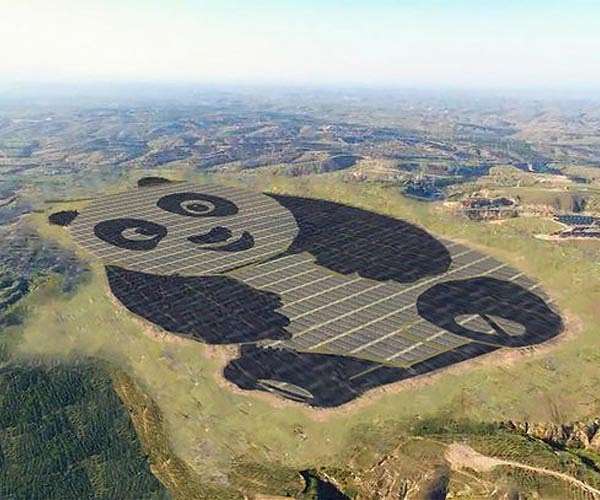China’s solar power is moving from supremacy to oversupply
Strong state support and massive private investment have turned China’s solar industry into a global powerhouse, but it faces new headwinds, from punitive tariffs abroad to a brutal price war at home.
Officials meeting in Baku next month for the COP29 summit hope to agree on new financial targets to help developing countries respond to climate change, including dumping fossil fuels.
Last year, countries agreed to triple global installed renewable energy capacity by 2030.
China installs almost twice as much solar and wind energy as all other countries combined.
And it dominates the market.
It makes eight out of ten solar panels and controls 80 percent of every stage of the production process.
It is also home to the world’s top 10 suppliers of solar panel manufacturing equipment, and related exports reached a record $49 billion last year, according to Wood Mackenzie.
That supremacy is not accidental: Chinese state support has been crucial, analysts say.
According to the International Energy Agency, Beijing invested more than $50 billion in new solar energy capacity between 2011 and 2022.
The industry has also benefited from access to cheap raw materials, readily available capital from state-owned banks and vast technical manpower.
“Chinese manufacturers were ahead of everyone else in terms of costs,” said Lauri Myllyvirta, co-founder of the Center for Research on Energy and Clean Air, a climate think tank.
“That meant new investments are happening in China because it is the most competitive there,” he told AFP.
The focus has led to a “steep learning curve… both in terms of solar cell technology and production knowledge,” said Johannes Bernreuter, a longtime solar industry analyst.
That, in turn, has created “an efficient ecosystem for the industry,” he said.
– ‘Overcapacity’-
As countries around the world rush to overhaul their energy systems, Chinese solar supremacy has become a growing concern.
The United States and other Western countries have accused Beijing of deliberate “overcapacity” and flooding global markets with cheap solar energy exports aimed at undermining competition.
Washington has doubled tariffs on Chinese panels to 50 percent, part of a broader package targeting $18 billion of Chinese imports in strategic sectors including electric vehicles, batteries, critical minerals and medical products.
The European Union is also investigating Chinese solar panel manufacturers for allegedly receiving unfair subsidies.
Most U.S. solar panel imports now come from Southeast Asia, but Washington says Chinese manufacturers have moved operations there to avoid barriers.
China is also responsible for almost all of Europe’s imports of solar panels from outside the bloc.
That means many markets will struggle to catch up on “two decades of very strong and very successful industrial policies in China,” Myllyvirta said.
However, China’s solar industry faces its own challenges beyond trade barriers in the West.
The sector’s supersonic expansion has overtaxed domestic industries, overloaded China’s power grid and sparked a brutal price war, experts say.
Industry leaders have reportedly warned of an “ice age” and urged government action to halt falling prices, but there is little sign of relief.
This year saw a wave of bankruptcies and the number of new solar projects fell by more than 75 percent in the first half of 2024, an industry group said in July.
– ‘Many companies will go bankrupt’ –
The price wars, so fierce that solar export revenues fell last year even as volumes hit a new high, are like a “snake eating its own tail”, analyst David Fishman has warned.
Companies get stuck “in this cycle of competition where whoever can endure the pain the longest comes out on top,” said Fishman, a senior manager at Lantau Group, which specializes in China’s energy sector.
“Many companies will go bankrupt along the way.”
And while production surpluses have helped China meet its wind and solar installation target nearly six years ahead of schedule, the country’s power grid is struggling to keep up.
Increasingly, renewable supply is being blocked to prevent the grid from becoming overloaded, a process known as curtailment.
According to Fitch Ratings, solar curtailment increased by four percent in the first quarter of 2024 from a year earlier.
Authorities will soon be forced to “stop approving new projects or allowing projects to connect to the grid if it means discount rates are likely to go higher,” Fishman said.
“They have to build,” he added. “They have to catch up.”
China’s solar energy sector, which has been blocked in the West and is no longer on track at home, is looking for new markets. This year, Europe was overtaken by Asia as the largest export market for solar energy products, an industry body said.
Exports to Africa also rose 187 percent year-on-year in 2023, although the continent still buys a small share compared to Europe, according to energy think tank Ember.
The sector is now in a “restructuring and shakeout phase,” Bernreuter said.
After that, “China’s solar industry will march forward with an unwavering pace and a more global production footprint.”


